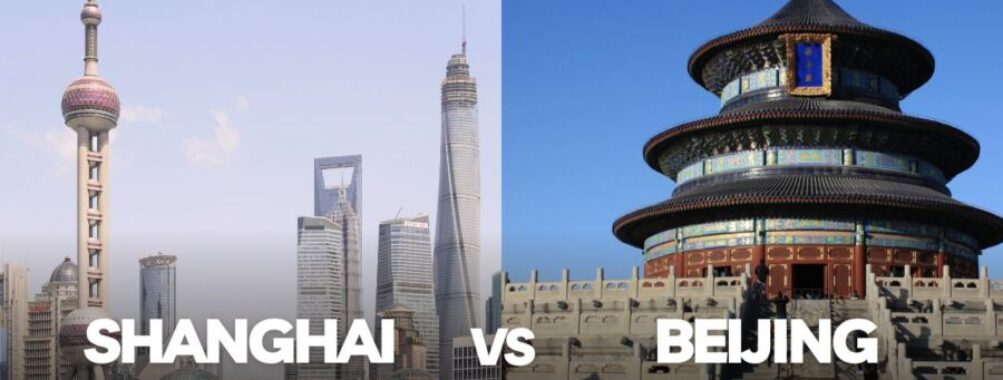
Shanghai vs Beijing: 5 Key Differences Every Traveler Should Know in 2025
Shanghai and Beijing are two of China’s most famous cities, each with its unique character. Shanghai is a modern city with ancient touches, while Beijing is an ancient city with modern elements. The contrast between these cities gives travelers very different experiences depending on which one they choose to visit.
As the capital city, Beijing offers more historical and cultural attractions including the Forbidden City and easy access to the Great Wall. Meanwhile, Shanghai gives visitors a glimpse of China’s future with its iconic skyline and cosmopolitan atmosphere. During winter, Shanghai enjoys milder weather than Beijing and often displays festive Christmas decorations.
The cities also differ in their layout and feel. Beijing is characterized by wide boulevards and ring roads that cut through the city, giving it a more spread-out feeling. On the other hand, Shanghai has a more polished, international vibe with its waterfront location along the Huangpu River, which adds to its charm.
Contents
- Historical Evolution
- Ming Dynasty and Architectural Heritage
- Modern Developments and Global Influence
- Geographical Comparison
- Topography and Natural Landscapes
- Climate and Weather Patterns
- Economic Dynamics
- Commercial Hubs and Business Opportunities
- Influence on the national and Global Economy
- Cultural Tapestry
- Art and Architecture
- Food and Gastronomy
- Performing Arts Scene
- Demographics and Lifestyle
- Population and Density
- Quality of Life Indicators
- Urban Experiences
- Neighborhoods and Local Life
- Nightlife and Entertainment
- Environmental Issues
- Air Pollution Challenges
- Green Initiatives and Parks
- Language and Communication
- Mandarin Variations and Local Dialects
- Language in Business and Daily Life
- Transportation and Mobility
- Public Transport Systems
- Ease of Relocating and Travel
- Frequently Asked Questions
- What distinguishes the living experiences in Shanghai from those in Beijing?
- How do the cultural offerings in Beijing compare with those in Shanghai?
- Which city should one choose for better career opportunities, Shanghai or Beijing?
- What are the primary differences between Shanghai and Beijing’s transport infrastructures?
- How do Beijing’s historical and cultural sites contrast with those in Shanghai?
- In terms of lifestyle and expat communities, how do Shanghai and Beijing differ?
- More Travel Guides
Historical Evolution
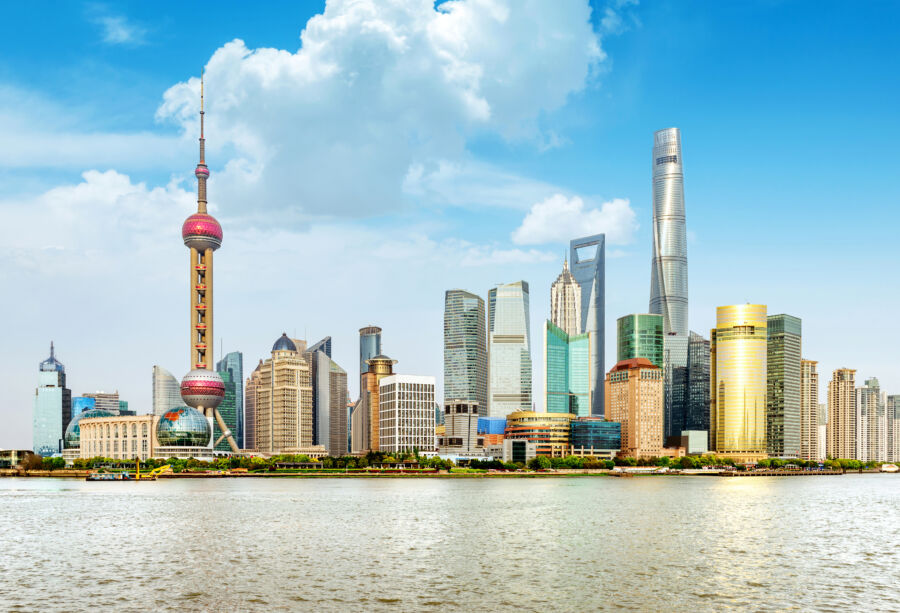
Beijing and Shanghai followed vastly different historical paths, with Beijing serving as an imperial capital while Shanghai transformed from a fishing village into a commercial powerhouse.
Ming Dynasty and Architectural Heritage

Beijing’s historical significance dates back centuries, most notably during the Ming Dynasty (1368-1644), when it was firmly established as China’s capital. The Ming emperors left an indelible mark on Beijing by constructing the magnificent Forbidden City – a sprawling palace complex of 980 buildings that remains one of China’s most treasured historical sites.
The city’s layout followed strict feng shui principles, with the Forbidden City at its heart. Ming-era Beijing featured impressive city walls, temple complexes, and imperial gardens that showcased traditional Chinese architecture at its finest.
Shanghai, in contrast, remained a relatively modest fishing village during this period. While Beijing flourished as the center of imperial power, Shanghai’s historical evolution took a different path, lacking the grand imperial structures that defined its northern counterpart.
Modern Developments and Global Influence

The 19th century marked a turning point in both cities’ trajectories. After the Opium Wars, Shanghai transformed dramatically as it opened to foreign trade. European powers established concessions where they built their architectural styles, giving Shanghai its distinctive blend of East and West.
By the early 20th century, Shanghai had become China’s most cosmopolitan city—a bustling financial hub nicknamed the “Paris of the East.” Its waterfront area (the Bund) was filled with art deco buildings that symbolized its international character.
Beijing’s modern development focused more on political significance. After becoming the capital of the People’s Republic of China in 1949, Beijing underwent massive urban planning with Soviet-influenced architecture and wide boulevards. The city preserved its imperial heritage while embracing its role as China’s political center.
Geographical Comparison
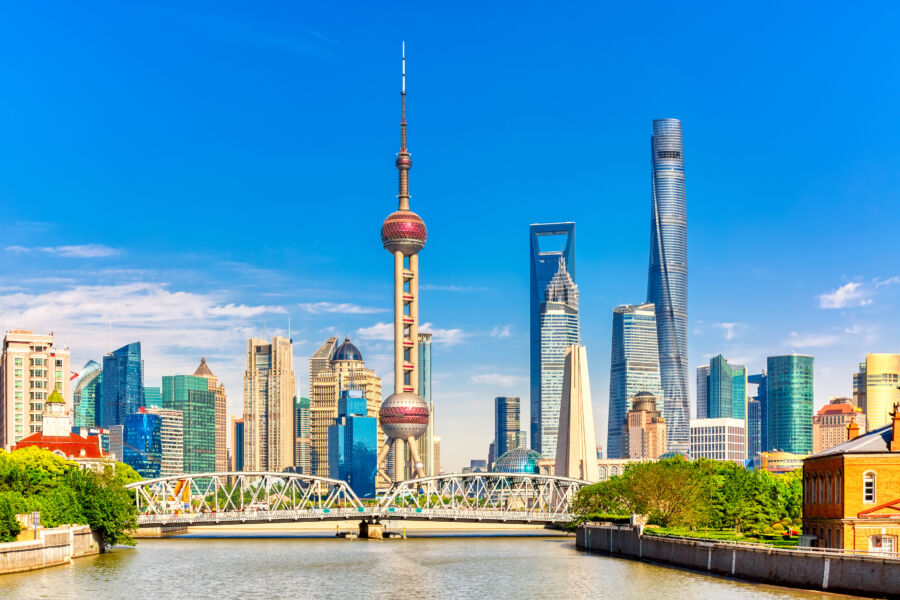
Shanghai and Beijing are in vastly different geographical settings, which shape everything from their cityscapes to the experiences visitors can expect. These differences in location and natural surroundings give each city its distinct character.
Topography and Natural Landscapes

Beijing nestles against the northern edge of the North China Plain, with mountains framing its northern and western sides. The city’s proximity to mountain ranges makes it a great base for exploring natural wonders like the Great Wall, which snakes across nearby peaks. Hiking opportunities abound in places like Fragrant Hills Park, just a short drive from downtown.
The terrain around Beijing is more rugged and varied, with elevations changing dramatically as you move from the city center outward. This creates some stunning vistas where urban landscapes meet mountain backdrops.
Shanghai, in contrast, sits on the flat Yangtze River Delta on China’s east coast. The city lacks dramatic elevation changes or mountain views. Its landscape is dominated by the Huangpu River, which cuts through the city’s heart and flows into the mighty Yangtze River and eventually the East China Sea.
Climate and Weather Patterns
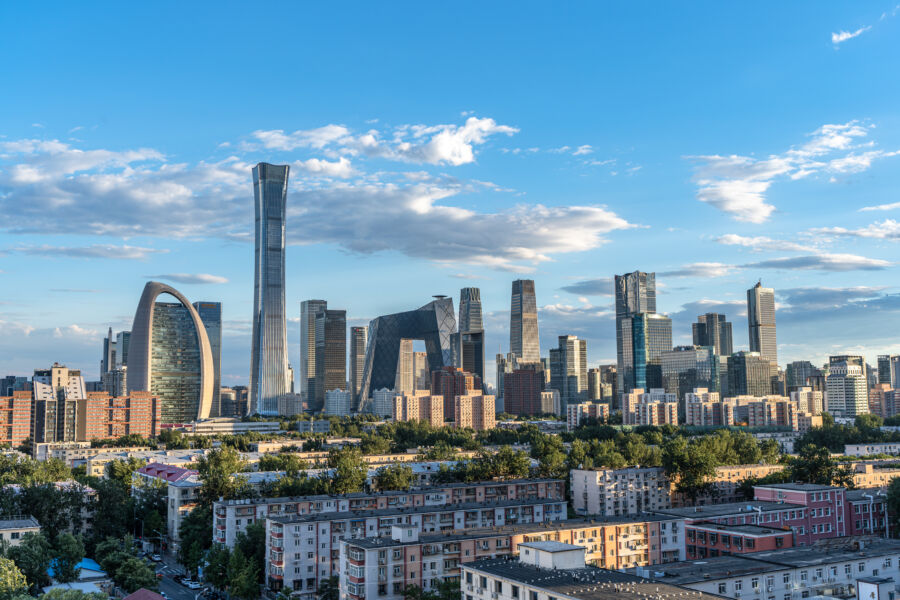
Beijing experiences more extreme temperature swings throughout the year. Winters can be brutally cold and dry, with temperatures often dropping below freezing. Summers bring scorching heat, frequently climbing above 30°C (86°F). Spring and fall offer the most pleasant weather but can be short-lived.
The capital also deals with seasonal winds that sometimes bring dust storms from the Gobi Desert in spring, adding a yellowish haze to the sky.
Shanghai enjoys a milder climate overall with less extreme variations. According to search results, Shanghai’s average temperature is 5.1°C higher than Beijing’s. Winters rarely dip below freezing but can feel damp and chilly due to coastal humidity.
Summer brings hot, muggy weather with frequent rainfall. Shanghai’s proximity to the ocean increases humidity year-round, making summer heat feel more oppressive despite maximum temperatures averaging 2.8°C higher in Beijing.
Economic Dynamics

Shanghai and Beijing stand as China’s economic powerhouses, each with distinct economic characteristics that shape their urban landscapes and global significance. The cities represent different models of Chinese economic development, with Shanghai embracing international commerce while Beijing leverages its political capital status.
Commercial Hubs and Business Opportunities

Shanghai shines as China’s commercial center, with its impressive skyline in Pudong symbolizing the country’s economic rise. The city hosts the world’s busiest container port and China’s main stock exchange, creating a gateway for international business. Foreign companies often choose Shanghai as their China headquarters thanks to its more international atmosphere and business-friendly policies.
Beijing, by contrast, houses most state-owned enterprises and government-affiliated businesses. Its economy benefits from being the political center, attracting companies that need regular interaction with regulatory authorities. The city’s tech scene has exploded recently, with Zhongguancun often called “China’s Silicon Valley.”
Nearby cities like Suzhou and Hangzhou have benefited from Shanghai’s economic spillover, developing into tech and manufacturing hubs. Though historically significant, Nanjing now positions itself as a more affordable alternative to both giants.
Influence on the national and Global Economy
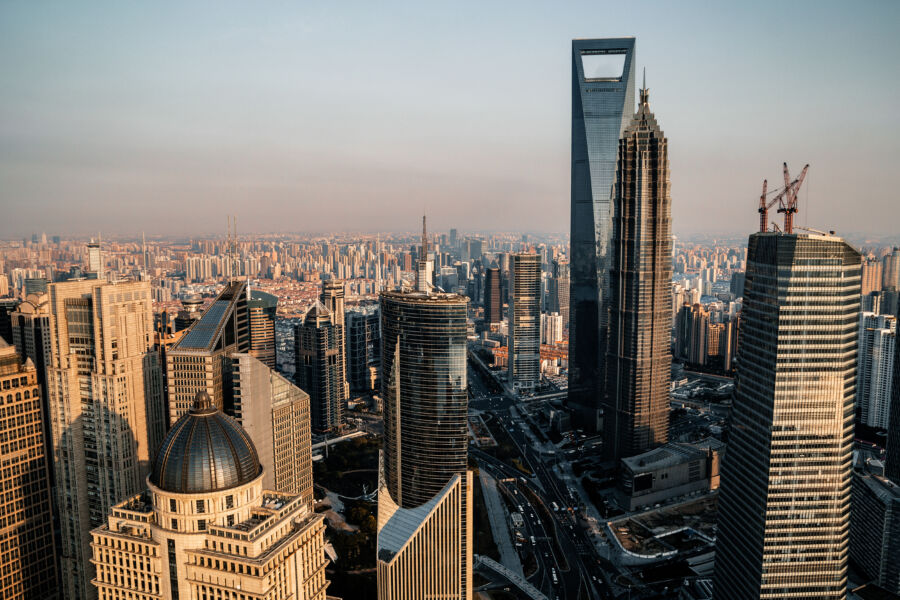
Shanghai contributed an impressive $552.3 billion to China’s economy in 2019 – roughly equivalent to Thailand’s GDP! The city drives China’s financial sector reforms and serves as a testing ground for economic policies before nationwide implementation. Its free trade zone experiments with market liberalization that may eventually spread throughout China.
Beijing’s $512 billion economic output closely trails Shanghai’s, but its influence extends beyond numbers. As the command center for China’s economy, Beijing’s policy decisions determine the direction of national development. The capital attracts massive infrastructure investment and hosts the headquarters of China’s largest banks and energy companies.
Both cities compete for foreign investment, with Shanghai generally more successful with Western companies, while Beijing attracts significant government-backed projects. Together, they form twin engines driving China’s economic growth, though Shanghai tends to represent China’s future economic aspirations while Beijing embodies its current economic realities.
Cultural Tapestry

Both Beijing and Shanghai showcase China’s incredible cultural depth but in distinctly different ways. Beijing embodies China’s imperial pas,t while Shanghai represents its modern fusion of East and West.
Art and Architecture

Beijing’s architecture tells the story of China’s imperial grandeur. The Forbidden City is the world’s largest palace complex, with its striking red walls and golden roofs. The Temple of Heaven shows traditional Chinese design with circular shapes and symbolic colors.
Shanghai presents a different architectural story. The Bund features stunning colonial-era buildings from the early 20th century. Just across the river, Pudong’s futuristic skyline with the Oriental Pearl Tower and Shanghai Tower represents modern China’s ambitions.
Art galleries differ, too. Beijing’s 798 Art District occupies a decommissioned military factory complex, hosting avant-garde exhibitions. Shanghai’s M50 art hub, with international influences visible, feels more commercially polished.
Food and Gastronomy

Beijing’s cuisine is hearty and reflects its northern climate. Peking Duck reigns supreme here—crispy skin, tender meat, and the ritual of wrapping it in thin pancakes with scallions and sweet bean sauce is a must-try experience. Other Beijing specialties include jianbing (savory crepes) and Zhejiang noodles topped with soybean paste.
Shanghai cuisine leans toward sweeter, more delicate flavors. Xiaolongbao (soup dumplings) burst with flavorful broth when bitten. Hairy crab dishes showcase the city’s love for seasonal seafood.
Food streets differ, too. Beijing’s Guijie (Ghost Street) buzzes with locals enjoying spicy crayfish late into the night. Shanghai’s food scene feels more internationally influenced, with French concession areas hosting fusion restaurants alongside traditional eateries.
Performing Arts Scene
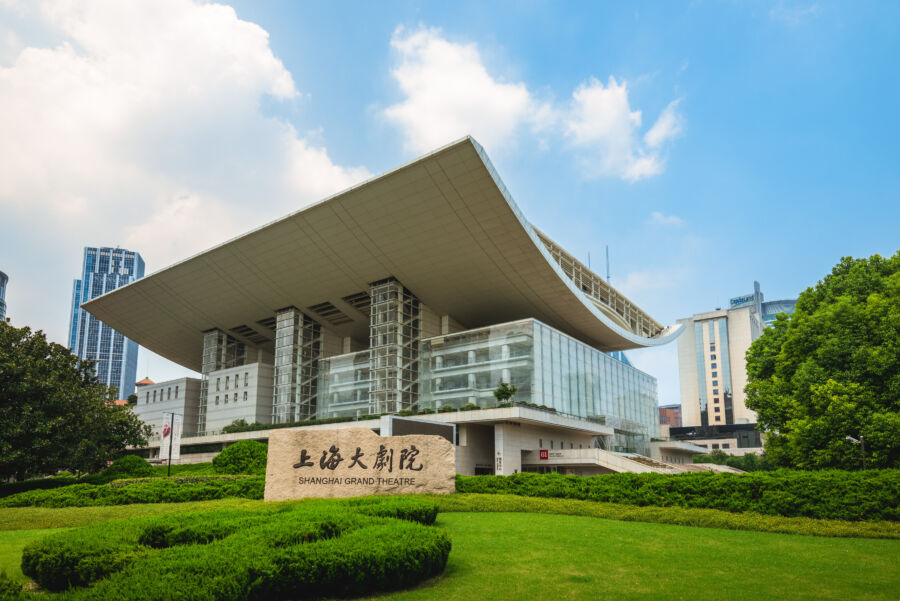
Beijing proudly maintains China’s traditional performing arts. The Peking Opera, with its colorful face masks and high-pitched singing, represents centuries of theatrical tradition. The National Centre for the Performing Arts hosts world-class performances in a stunning oval building nicknamed “The Egg.”
Shanghai’s performing arts scene blends Chinese traditions with Western influences. The Shanghai Grand Theatre and Shanghai Symphony Orchestra offer classical performances, while the city embraces more experimental theater and modern dance.
Street performances differ, too. In Beijing’s hutongs (traditional alleyways), you might find elderly musicians playing traditional instruments. Shanghai’s former French Concession areas host jazz musicians and indie bands in intimate venues.
See Related: Shanghai vs Seoul: Key Differences Between Asia’s Urban Giants
Demographics and Lifestyle

Beijing and Shanghai have distinct differences in population makeup and daily living conditions. These two major Chinese cities offer different experiences in density, cost of living, and overall quality of life.
Population and Density

Shanghai edges out Beijing in sheer population numbers, with over 26 million residents compared to Beijing’s approximately 21 million. Shanghai packs these residents into a smaller land area, making many districts noticeably more dense and crowded.
Beijing spreads its population across a larger geographic footprint with its six “ring roads,” creating a sprawling urban environment. The capital city attracts more government workers and cultural professionals, giving it a slightly different demographic mix.
Shanghai has historically been more international, nicknamed “the Paris of the East.” You’ll notice more expatriates and international influences throughout the city. The local population tends to be more cosmopolitan, with many residents working in finance, business, and international trade.
Quality of Life Indicators

The cost of living varies between the two cities, with Shanghai generally ranking more expensive overall. Housing costs, in particular, tend to be higher in Shanghai, especially in desirable central districts. However, both cities are significantly more expensive than other Chinese urban centers.
Air quality differs notably between the cities. Beijing suffers from more frequent poor air quality days, with its inland location and surrounding industrial areas contributing to pollution issues. With its coastal location, Shanghai typically enjoys better air circulation and slightly cleaner air on average.
Weather patterns affect daily life as well. Beijing experiences drier conditions with more sunshine but harsher temperature extremes. Shanghai has a milder climate but deals with more rainfall and humidity throughout the year.
Job opportunities reflect each city’s character. Shanghai offers more positions in finance, consulting, and international business sectors. Beijing presents more options in government, cultural institutions, and national companies.
Urban Experiences
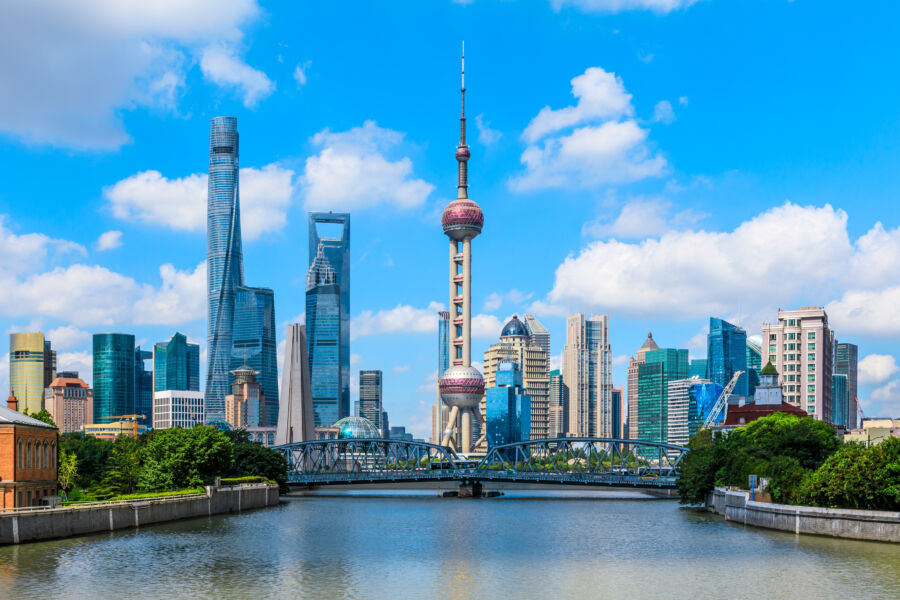
Beijing and Shanghai offer distinct urban environments, each with its character and appeal to visitors. The cities contrast atmosphere, architecture, and lifestyle, giving travelers completely different experiences of modern China.
Neighborhoods and Local Life
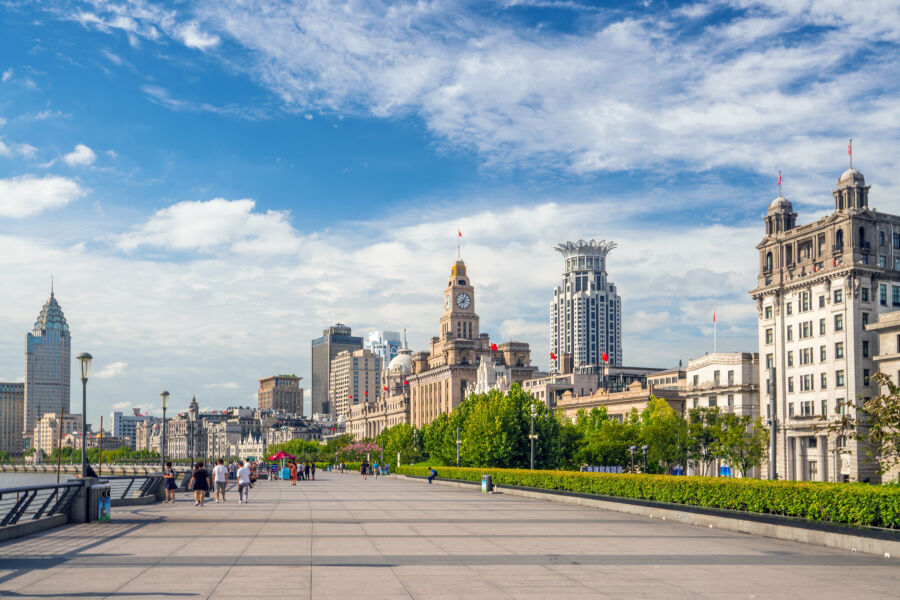
Shanghai’s neighborhoods blend colonial history with modern development. The Bund area showcases stunning waterfront views with its mix of historical European-style buildings facing ultra-modern Pudong skyscrapers across the river. The French Concession feels like a different world with its tree-lined streets, boutique shops, and sidewalk cafés.
Beijing’s hutongs (narrow alleyways) provide a glimpse into traditional Chinese life. These ancient neighborhoods with courtyard homes offer authentic experiences despite rapid modernization. The 798 Art District transformed old factories into creative spaces filled with galleries and hip cafés.
Both cities have expat-friendly areas. Shanghai’s former French Concession attracts foreigners with Western amenities, while Beijing’s Sanlitun area is a hub for international residents. Shanghai generally feels more international and accessible to Western visitors.
Nightlife and Entertainment
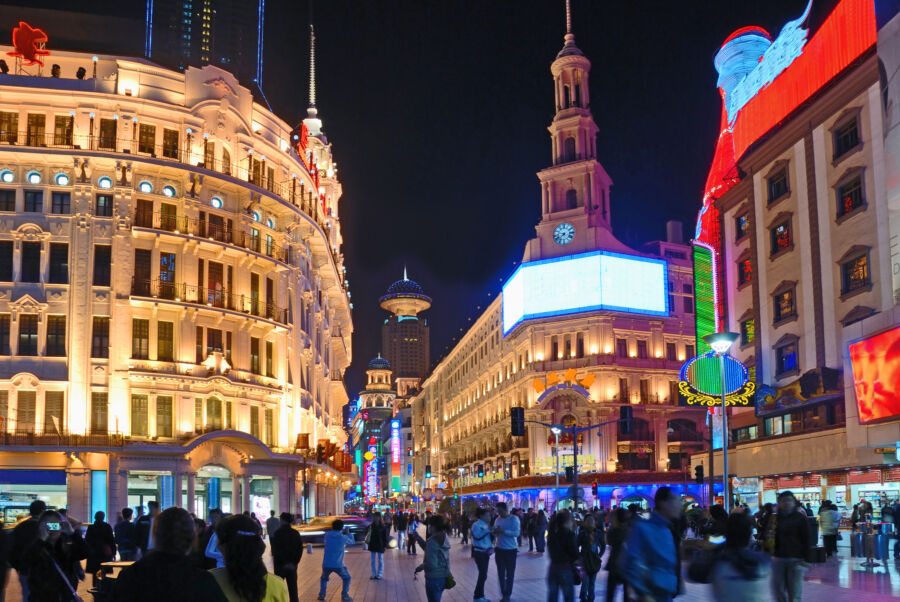
Shanghai boasts a more cosmopolitan nightlife scene. The city offers everything from swanky rooftop bars overlooking the Bund to underground clubs in repurposed factories. As young professionals and travelers hop between trendy cocktail lounges and live music venues, Xintiandi and the Former French Concession buzz with activity.
Beijing’s nightlife feels more diverse and locally authentic. The Gulou area features alternative music venues and dive bars that are popular with students and artists. Sanlitun provides upscale options with international DJs and exclusive clubs for the elite.
Cultural entertainment differs, too. Beijing excels with traditional performances like Peking Opera and acrobatics shows. Meanwhile, Shanghai leans toward contemporary arts with modern theaters and international performances. Both cities host vibrant food streets where locals and tourists enjoy late-night snacks and street food until the early morning hours.
Environmental Issues

Shanghai and Beijing face significant environmental challenges that impact daily life, though each city deals with different issues and has taken various approaches to address them.
Air Pollution Challenges

Images of smog-filled skies have long made international headlines for Beijing’s air pollution problems. However, recent trends show Shanghai’s air quality has worsened, sometimes exceeding Beijing’s pollution levels. This shift is surprising to many travelers and residents alike.
Beijing’s pollution tends to be more seasonal and weather-dependent, with winter months being particularly bad due to coal heating. The city experiences more sunny days but can suffer from severe haze episodes when pollution gets trapped.
On the other hand, Shanghai’s air quality issues stem largely from industrial activities in neighboring provinces, vehicle emissions, and construction. The city experiences more rain, which sometimes helps clear pollutants, but its coastal location can trap pollutants when weather conditions are unfavorable.
Both cities use air quality warning systems that residents check daily, similar to weather forecasts. Many locals wear masks on bad air days; air purifiers are common household items.
Green Initiatives and Parks

Beijing boasts impressive parks and green spaces, including the massive Olympic Forest Park and the historic Temple of Heaven Park. The city has invested heavily in tree-planting campaigns, adding thousands of hectares of forest to combat desertification and improve air quality.
The capital city’s ring road design includes green belts, and in recent years, abandoned industrial zones have been transformed into ecological corridors. Beijing’s commitment to greenery is part of its broader environmental rehabilitation strategy.
Shanghai’s approach focuses on creating urban oases amid its dense cityscape. The city features beautiful waterfront areas along the Huangpu River and charming parks like Fuxing and Century Park. Many neighborhoods have pocket parks perfect for morning tai chi sessions.
Shanghai has also embraced innovative green architecture, with buildings featuring vertical gardens and sustainable design. The city’s recent urban planning emphasizes public transportation expansion to reduce vehicle emissions and improve general livability.
See Related: Best Places to Visit in Asia This Year
Language and Communication
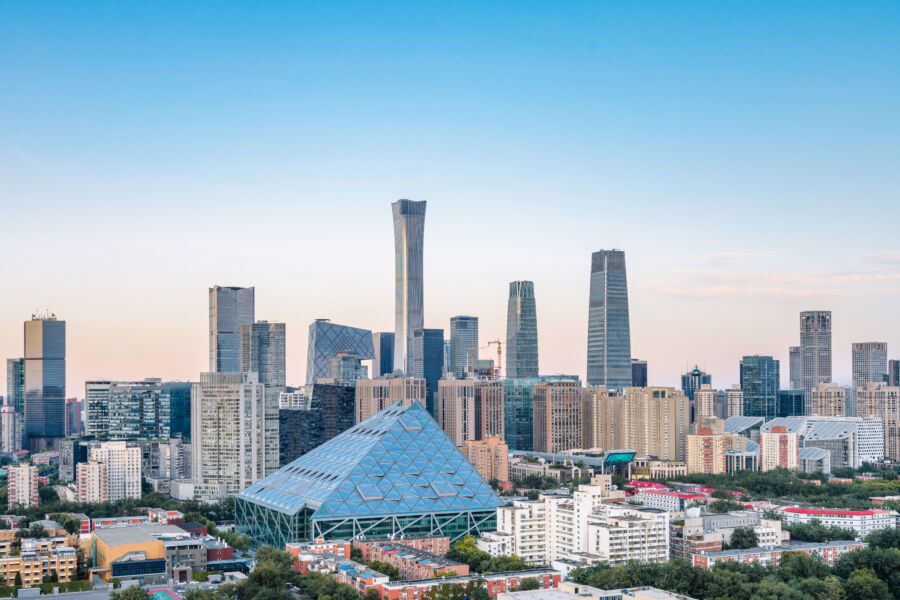
Communication styles differ greatly between Beijing and Shanghai. Each city has its own unique linguistic flavor that impacts daily life and business interactions for locals and visitors alike.
Mandarin Variations and Local Dialects

In Beijing, residents speak with a distinctive accent characterized by a strong “rrrr” sound at the end of words. Locals often say Beijingers “speak with the throat,” giving their Mandarin a rough, throaty quality. This Beijing dialect is the standard pronunciation many Mandarin learners aim to master.
Conversely, Shanghai has its own local dialect called Shanghainese, which is quite different from standard Mandarin. Many older Shanghai residents speak this dialect fluently, though younger generations increasingly focus on Mandarin. The Shanghai accent when speaking Mandarin tends to be softer and lacks the strong “rrrr” sounds found in Beijing.
Beijing might offer more authentic Mandarin exposure for language learners, while Shanghai provides a more diverse linguistic environment.
Language in Business and Daily Life

Shanghai has earned a reputation for its high level of English education and international outlook. Foreigners can often navigate the city with minimal Mandarin skills, especially in business districts, tourist areas, and international establishments. Street signs, menus, and public transportation announcements commonly include English translations.
Beijing, as the political and cultural center, emphasizes the Chinese language. While English is still present in tourist areas and international businesses, it isn’t as widespread as in Shanghai.
Business interactions in Shanghai may switch between languages more freely, while in Beijing, knowing some Mandarin phrases becomes more valuable for making connections and navigating daily life.
Transportation and Mobility

Getting around these massive Chinese cities presents distinct challenges and opportunities. Both Beijing and Shanghai have invested heavily in public transportation, but they differ significantly in efficiency, congestion levels, and the overall experience of daily commuting.
Public Transport Systems

Shanghai boasts one of the world’s most extensive metro systems, with the largest network in China at 588 km of track. The system is incredibly efficient, clean, and easy for foreigners to navigate with English signage.
Beijing’s metro, while slightly smaller, has grown rapidly and now ranks as China’s second-largest subway system. Both cities offer comprehensive subway coverage, but Shanghai’s system tends to run more punctually with fewer delays during rush hour.
The difference becomes more apparent when comparing road transportation. Beijing struggles with notorious traffic congestion due to its six “ring roads” cutting through the city. Meanwhile, Shanghai has managed traffic flow more effectively because of its stricter car ownership policies.
Ease of Relocating and Travel
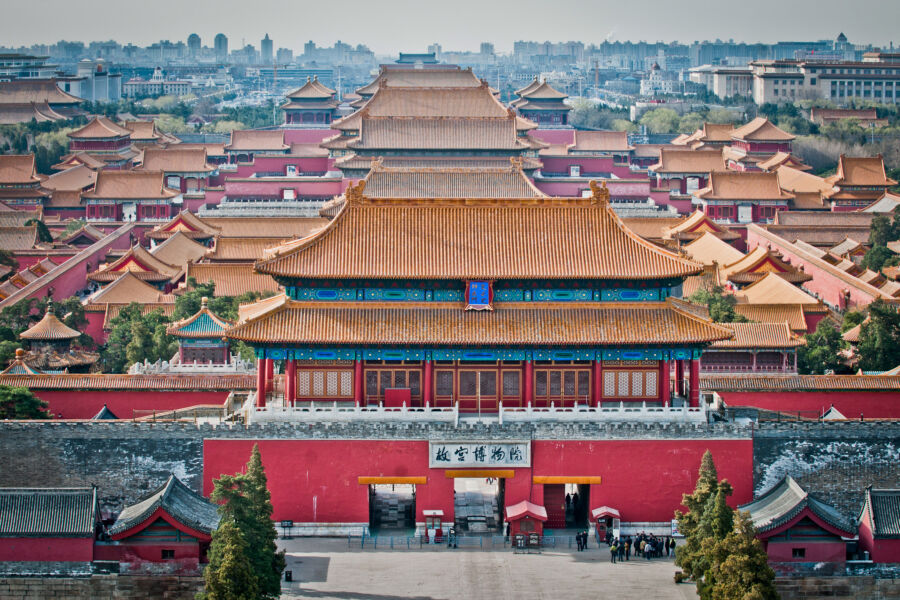
Shanghai’s position near the ocean is a significant advantage for international connections. The city is China’s main international gateway, with excellent flight connections worldwide and a major shipping port.
Beijing, being landlocked, focuses more on domestic transportation connections. However, it offers outstanding high-speed rail links to other major Chinese cities. The Beijing-Shanghai high-speed railway lets travelers experience both cities with just 4.5 hours of comfortable travel.
For newcomers relocating to either city, Shanghai generally provides an easier adjustment period. Its international character, more widespread English usage on public transport, and slightly less crowded subway system make daily navigation less overwhelming for expats.
Vehicle ownership trends differ significantly between the cities. Beijing had nearly 4.8 million vehicles by 2010, while Shanghai had only 3.1 million despite similar population sizes. This reflects Shanghai’s more restrictive car ownership policies to combat congestion.
See Related: Shanghai vs Hong Kong: Key Differences Every Traveler Should Know
Frequently Asked Questions
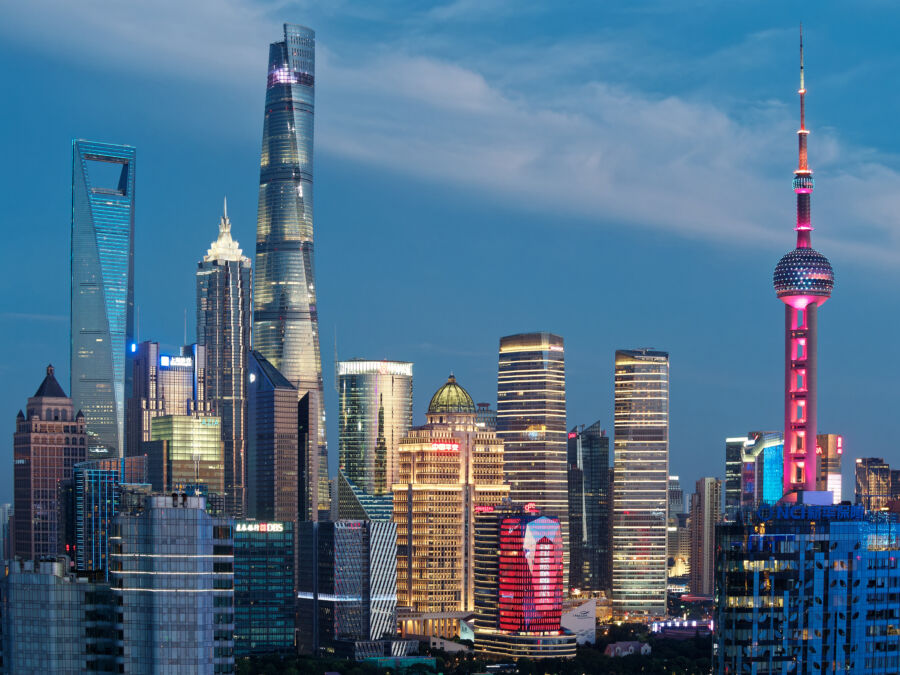
Both Shanghai and Beijing offer vastly different experiences for visitors and residents alike. These major Chinese cities have unique characteristics that set them apart in areas ranging from culture and career opportunities to transportation and lifestyle.
What distinguishes the living experiences in Shanghai from those in Beijing?
Shanghai generally offers a more international living environment with a cosmopolitan feel. The city is known for its modern infrastructure and slightly milder climate, especially in winter.
Beijing has a more traditional Chinese atmosphere with drier weather and more sunshine throughout the year. However, Beijing often struggles with air quality issues more than Shanghai does.
The cost of living in Shanghai tends to be higher, particularly for housing in central areas. Meanwhile, Beijing’s sprawling layout means residents often face longer commutes.
How do the cultural offerings in Beijing compare with those in Shanghai?
Beijing is the undisputed cultural capital of China. It is rich in historical sites and traditional Chinese architecture. The city houses important landmarks like the Forbidden City, Temple of Heaven, and Summer Palace.
Shanghai’s cultural scene is more contemporary and international, featuring modern art galleries, fusion cuisine, and a vibrant nightlife. The city’s colonial history has left a unique architectural blend along the Bund and in the former concession areas.
Beijing offers a more immersive experience for travelers interested in traditional Chinese culture. Meanwhile, Shanghai shines for those seeking a mix of East-meets-West cultural elements.
Which city should one choose for better career opportunities, Shanghai or Beijing?
Shanghai dominates the finance, international trade, and fashion industries. The city attracts multinational corporations and offers numerous business service opportunities.
Beijing excels in technology, education, and government-related sectors. As the political center, it hosts many headquarters of state-owned enterprises and leading tech companies.
Shanghai may offer an easier adjustment for foreign professionals with its larger expat community and international business environment. Meanwhile, Beijing’s job market often requires stronger Chinese language skills.
What are the primary differences between Shanghai and Beijing’s transport infrastructures?
Shanghai boasts an extremely efficient and extensive metro system that’s easy for foreigners to navigate. The city is generally more compact, making travel times between destinations shorter.
Beijing’s subway system is comprehensive but covers a much larger geographical area. Due to the city’s massive size and spread-out attractions, travel times can be longer.
Taxis are more abundant and somewhat easier to hail in Shanghai. Both cities offer excellent high-speed rail connections to other parts of China.
How do Beijing’s historical and cultural sites contrast with those in Shanghai?
Beijing offers unparalleled access to ancient Chinese history with easy day trips to multiple sections of the Great Wall. The city center features imperial palaces, temples, and traditional hutong neighborhoods.
Shanghai’s historical sites reflect its more recent past as a trading port. The city showcases colonial-era buildings, the historic Bund waterfront, and a few traditional Chinese gardens.
In terms of lifestyle and expat communities, how do Shanghai and Beijing differ?
Shanghai has a larger and more diverse expatriate community, making it easier for newcomers to connect with fellow foreigners. The city offers more Western amenities, international schools, and foreign restaurants.
Beijing’s expat scene focuses on diplomatic communities, educational institutions, and NGOs. The lifestyle is generally more authentically Chinese.
Shanghai often feels more fast-paced and commercially driven. Meanwhile, despite being the capital, Beijing can sometimes offer a more relaxed pace of life outside its business districts.



